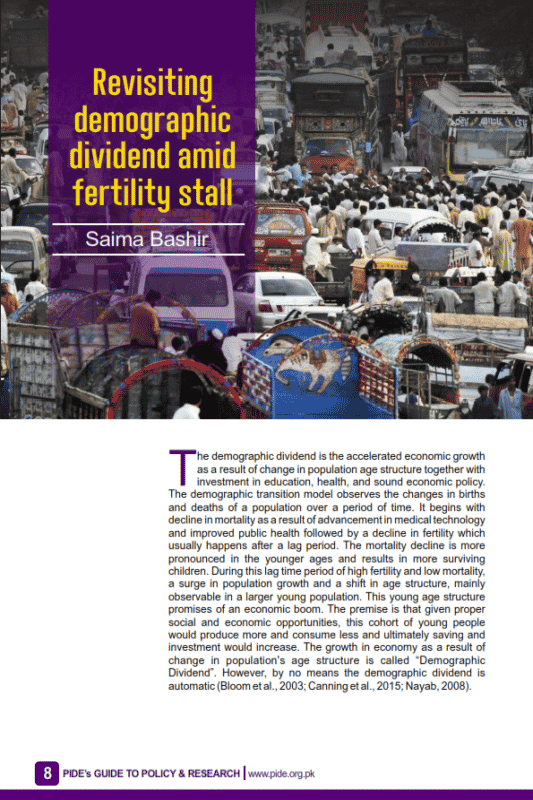
Pakistan Institute of Development Economics
- Home
Our Portals
MenuMenuMenuMenuMenuMenuMenu - ResearchMenuMenuMenuMenuMenuMenuMenu
- Discourse
- The PDR
- Our Researchers
- Academics
- Degree Verification
- Thesis Portal
- Our Portals
Revisiting demographic dividend amid fertility stall
The demographic dividend is the accelerated economic growth as a result of change in population age structure together with investment in education, health, and sound economic policy. The demographic transition model observes the changes in births and deaths of a population over a period of time. It begins with decline in mortality as a result of advancement in medical technology and improved public health followed by a decline in fertility which usually happens after a lag period. The mortality decline is more pronounced in the younger ages and results in more surviving children. During this lag time period of high fertility and low mortality, a surge in population growth and a shift in age structure, mainly observable in a larger young population. This young age structure promises of an economic boom. The premise is that given proper social and economic opportunities, this cohort of young people would produce more and consume less and ultimately saving and investment would increase. The growth in economy as a result of change in population’s age structure is called “Demographic Dividend”. However, by no means the demographic dividend is automatic (Bloom et al., 2003; Canning et al., 2015; Nayab, 2008).



